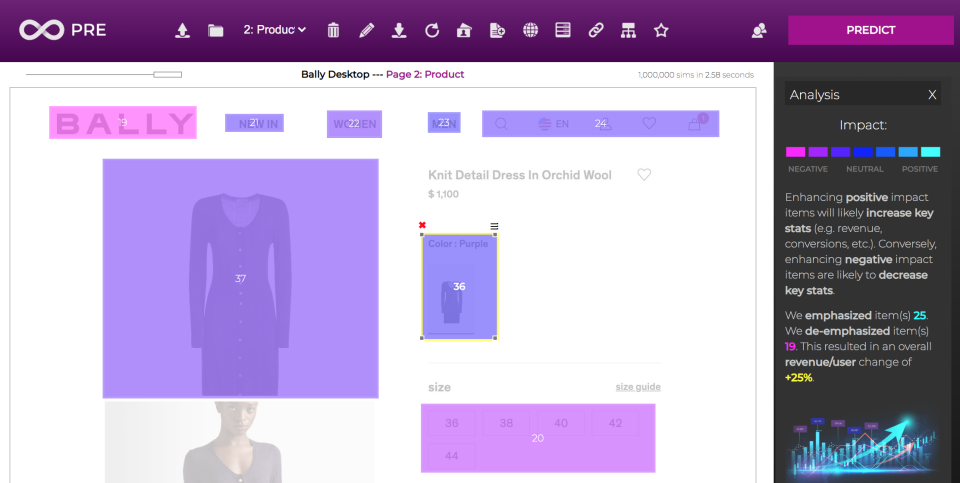Bally Partners With PRE to Swathe Its E-Commerce in AI

Former Modiface chief executive officer Parham Aarabi’s latest venture revealed Friday that it’s giving Bally’s online store an AI makeover.
More specifically, PRE, a Toronto-based start-up formerly known as Predictive Commerce, has entered into a partnership with the Swiss luxury brand to optimize the e-commerce business by using human behavior modeling to analyze the website.
More from WWD
The companies have been working together for months but the relationship became more serious roughly six months ago, when Aarabi’s team wowed the client with its technology: PRE used AI to create virtual shoppers that simulated the brand’s online customers.
The approach “specifically homed in on the luxury fashion shopper and provided us a lens to better understand the features and services that would provide the highest results,” Nathalie Sisouk, global chief digital officer at Bally, said in a statement.
The brand was also impressed with the speed of execution. According to Laura Guazzaroni, Bally’s director of global omnichannel, “within minutes, [PRE] provided relevant and actionable statistics which we used to optimize the digital user journey.”
In the 10 months since PRE came out of stealth mode, AI’s powers and uses have ballooned, both to the public’s excitement and dread. Meanwhile, the business world has seen a stampede of platforms and tools racing to apply the technology to creative campaigns, design, communications, customer service, product recommendations and other data optimizations for logistics, supply chain, merchandising, inventory and much more.
Amid the cacophony, PRE manages to highlight yet another unique use case for retailers and brands.
Its approach managed to uncover crucial facets of Bally’s e-commerce that could be difficult or time-consuming to pinpoint otherwise. For instance, PRE noticed that virtual shoppers got hung up by the site’s size recommendation feature, and this time drag correlated to a “significant disengagement after 15 seconds,” according to the firm. That revelation prompted the partners to develop a new size translation tool, which is now being tested ahead of its launch.

Similarly, after analyzing the impact of product descriptions on shoppers, the partners used generative AI to rewrite them based on the behavior modeling.
That’s just for starters. “Over the next year, we envision significant further PRE-enabled AI advancements and innovations for Bally.com,” said Aarabi, who, as founder and CEO of PRE, is naturally focused on the business application of its tools.
It makes sense, as plenty of companies revel in what AI can do. But there are broader implications about such fundamentally powerful technology. The practical ability to mimic people, create virtual traffic and clone online behavior easily lends itself to myriad so-called “white hat” and “black hat” scenarios.
Of course, that’s not news to Aarabi, who is also a professor of applied artificial intelligence at the University of Toronto. Notably, his method would be hard to duplicate, given that PRE uses data from a variety of places, including reciprocal data from client brands. Even so, what his firm has pulled off is indicative of the current AI era, as every breakthrough sparks a burgeoning crop of new use cases, tools and platforms.
Consider PRE itself. As a young start-up, it was conceived as a newfangled way of doing smarter website A/B testing. Now, in less than a year since launch, that vision is apparently a little too limiting, prompting the firm to explore what else its behavior modeling can lead to.
Best of WWD

